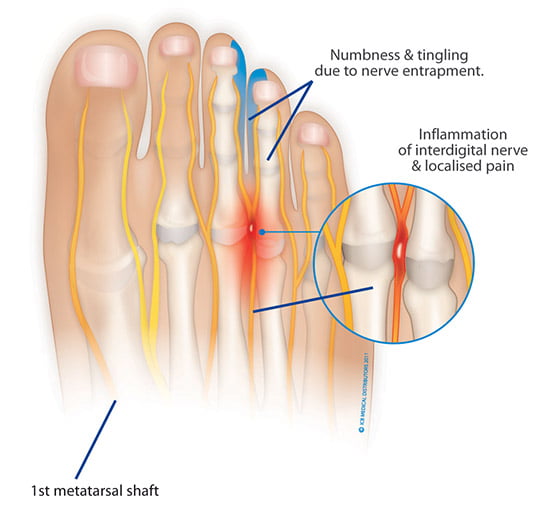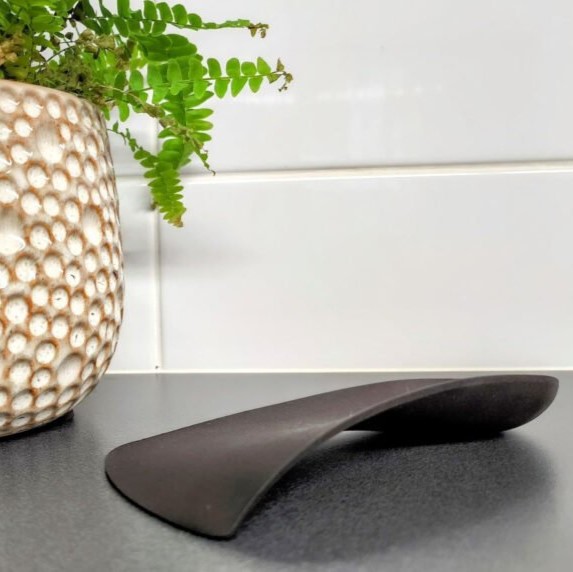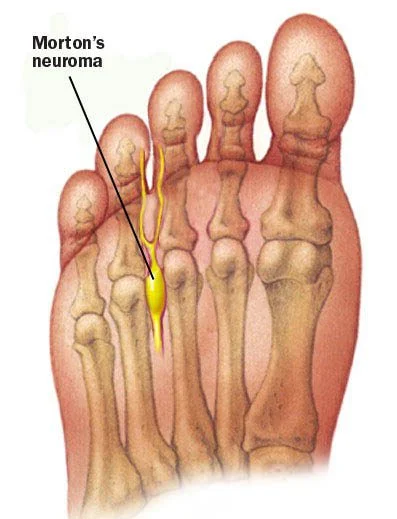Forefoot Conditions
pain in the ball of your foot
Symptoms
Sharp or burning pain in the ball of the foot, especially when standing or walking
Numbness or tingling in the toes
Swelling, redness, or bruising in the forefoot area
Pain that worsens with activity and improves with rest
Development of calluses under the ball of the foot


Causes
Metatarsalgia: Often caused by overuse, high-impact activities, or wearing shoes that lack adequate support. It can also result from abnormal foot mechanics, such as having a high arch or a second toe longer than the big toe.
Morton’s Neuroma: This condition involves the thickening of tissue around one of the nerves leading to the toes, often between the third and fourth toes. It is frequently caused by wearing tight or high-heeled shoes that compress the toes.
Bunions: A bony bump that forms on the joint at the base of the big toe. Bunions can develop due to genetic factors, improper footwear, or arthritis, causing pain and deformity over time.
Sesamoiditis: Inflammation or fracture of the small bones (sesamoids) located under the big toe joint. It often occurs in athletes and dancers who place repetitive stress on the forefoot.
Capsulitis: Inflammation of the ligaments around the toe joints, particularly the second toe. It can result from abnormal foot structure, overpronation, or trauma.
Treatment
Rest and Ice: Reducing activity and applying ice to the affected area can help alleviate inflammation and pain.
Custom Orthotic Devices: Our podiatrists design custom orthotics using exclusive orthotic design software and technology. These devices help distribute pressure more evenly across the forefoot, providing relief from pain and addressing specific foot mechanics.
Footwear Modification: Switching to shoes with a wider toe box, low heels, and good arch support can reduce pressure on the forefoot.
Strength & Conditioning: Exercises to strengthen the foot muscles, improve flexibility, and correct abnormal gait patterns can be beneficial.


Non-Conservative Treatment
If the above interventions haven’t been successful your podiatrist may recommend more invasive forms of treatment including the following:
Corticosteroid Injections: For severe inflammation, corticosteroid injections may provide temporary relief.
Surgical Intervention: In cases where conservative treatments fail, surgery may be required to correct structural abnormalities, remove neuromas, or realign bones.
We Fix
Most cases of forefoot pain respond well to conservative treatment, with significant improvement seen within 4-6 weeks. Surgical outcomes are generally positive, with patients experiencing long-term relief and improved foot function. Early intervention and proper foot care can prevent recurrence. For more information book an appointment with one of our expert podiatrists today.

